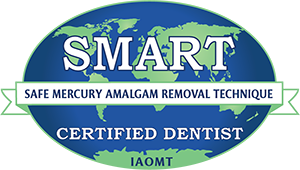Post-COVID Dentistry: Why Dental Caries are On the Rise
In September 2020 ,reiterated in 2021and 2022, the American Dental Association (ADA) Health Policy Institute released findings from an impact poll highlighting an increase in certain oral health conditions since the onset of the COVID-19 pandemic. Doctors who participated in the ADA poll reported increases in bruxism (54.9%), chipped and cracked teeth (53.4%), temporomandibular disorder symptoms (53.4%) and caries (26.4%) among patients.
As we continue into our third year of the COVID-19, now an endemic, the ongoing health challenges that came with it continue to impact my practices, my patients, and our collective mental health. This is especially clear when you consider ADA data highlighting how doctors are seeing an increase in bruxism, chipped and cracked teeth, TMD, and increases in caries and periodontal disease.
As dental professional, what does a respiratory virus like this one have to do with an increase rate of caries in our patients? There are lot of factors that may contribute to my patients' overall oral health-and specifically, an increase in caries and decay.
Factors that contribute to tooth decay and oral health decline:
As a dental professional, I must understand why many of my patients were suffering with a variety of dental issues during the COVID-19 pandemic, including (but not limited to) increased decay rates. Importantly, there are many factors at play that can impact my patient's overall oral health-some directly and others indirectly.
Stress and Xerostomia
Stress has a significant impact on the immune system and the body's ability to fight off infection. Stress also impacts our body's overall chemistry, causing us to produce stress-related hormones like cortisol, which has widespread effects throughout the body.
Stress also impacts our overall saliva production and flow, leading to an increase in xerostomia (dry mouth), which in turn can lead to thicker and stickier plaque than what is normally rinsed away with saliva. Of course, saliva has buffering capacity to neutralize acid that's produced from decay-causing bacteria.
When people deal with stress long enough, it can lead to anxiety and depression-which may lead my patients to be prescribed medications designed to help manage these issues. Many of these medications are helpful for managing these conditions-but a common side-effect of many of these medications is xerostomia (dry mouth).
Masks and Mouth Breathing
Some of my patients were wearing masks more than ever-which was leading many to become obligate mouth breathers. Since patients may struggle to breathe through their nose while wearing a mask, they will default to breathing through their mouths.
Mouth breathing has long been known to cause a host of negative effects on the oral environment from the constant wetting and drying of the tissues. Mouth breathing and xerostomia affect the overall oral environment, including the overall pH and the flora and microbiome of the oral cavity.
Not only does xerostomia contribute to changes, but stress also impacts our bodies' overall chemistry. This alters the overall flora and microbiome in the oral cavity-and with these changes, then the overall balance of the bacteria changes. In many cases, this leads to an imbalance that can lead to more bacteria, which can cause conditions including caries and periodontal disease.
Changes in Diet
Another factor that may have lead to an increase in caries during the COVID-19 pandemic was secondary to stress-and that is stress eating. Classic comfort foods are often high in sugar content, which alters the overall bacteria flora in a way that is more ideal for decay-causing bacteria.
Similarly, the pandemic is likely causing changes to patients' overall diet, including the foods they eat and the overall frequency. As patients were working more at home and less at a workplace, many patients may have found themselves eating different foods or eating or snacking more frequently at home. There again, this changes the overall oral environment. If patients have not changed their overall oral hygiene habits to compensate for this, then decay rates may increase.
Financial Changes and Oral Health
Another factor to consider is that many patients also suffered (or continue to experience) significant financial and economic changes amid the pandemic. There were massive changes in the workforce during this time and thus, many patients experience significant changes in finances.
Job changes and furloughs during the pandemic led to changes in dental benefit plans for many of our patients. Meanwhile, many dental offices were closed or saw minimum patients during the earliest days of the pandemic. This led to a significant lapse in care for many patients during this time.
For patients that have poor oral hygiene or who already have significant dental conditions, this created a perfect storm for a significant surge in the rate of caries and other dental conditions.
Final thoughts-and what to do:
The COVID-19 pandemic created a significant increase in health challenges for everyone-directly and indirectly. The overall long-term effects and issues will take years for dental profession to even begin to understand. My team and I at Rushmore Dental are more than happy to always look at factors causing this for you and to give you our best recommendations.
References:
Chen, Lili and Zhao, Jiajia and Peng, Jinfeng and Li, Xiaoshuang and Deng, Xuliang and Geng, Zhi and Shen, Zhenyu and Guo, Fengyuan and Zhang, Qianwen and Jin, Yang and Wang, Lin and Wang, Songlin, Detection of 2019-nCoV in Saliva and Characterization of Oral Symptoms in COVID-19 Patients (3/14/2020).
Gholami N, Hosseini Sabzvari B, Razzaghi A, Salah S. Effect of stress, anxiety and depression on unstimulated salivary flow rate and xerostomia. J Dent Res Dent Clin Dent Prospects. 2017 Fall;11(4):247-252. doi: 10.15171/joddd.2017.043. Epub 2017 Dec 13. PMID: 29354252; PMCID: PMC5768958.





